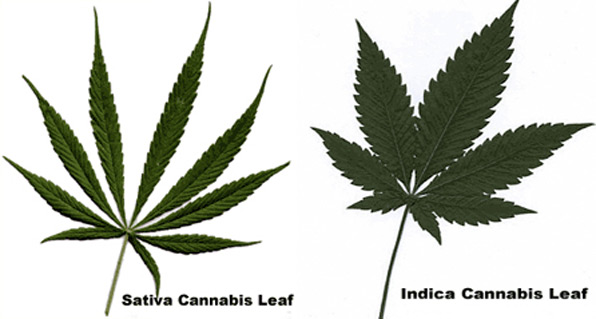Wait, they are not the same? No, they are not, but it really is not that simple. They are somewhat “parts of each other”, which makes it easy for people to misuse the terms. Over the years our understanding have shifted from just referring to these terms in the context of street drugs, to thinking more about its use in medical and recreational settings. There has also been some confusion indicated in class discussions, which is something I will try and tackle in this post to provide a clear explanation.
What is Cannabis?
The word itself is used as an umbrella-term to describe all products that have been derived from the Cannabis Sativa plant. The products have a wide variety of uses, as they contain a range of chemical substances from the total of over 500 that make up the plant.
Take a look when compared to another cannabis plant, Cannabis Indica!

What is Marijuana?
Marijuana directly refers to cannabis products (again, from the plant) that contain high amounts of THC. THC, or tetrahydrocannabinol, is the psychoactive “ingredient” of the product itself. It usually presents as dried, shredded leaves and flowers. It is a schedule I drug in the United states.
What is a Cannabinoid?
Cannabinoids are found in cannabis (the plant), and make up a specific group of substances. These include, but are not limited to the above-mentioned THC, and the well-known CBD, or cannabidiol. Cannabinoids are hugely important and hot topic these days, both for their potential in treatment and the controversy they cause.
Medicinal uses of each:
The NIH states that the cannabis plant and marijuana have NOT received approval from the FDA at all, hence why it is still categorized as a schedule I drug. What we call “medical marijuana”, that is approved for medical use, is really just a few medications that contain individual cannabinoids. Two different kinds of medications that we all refer to when using the term “medical marijuana” are Epidiolex and Marinol/Syndros. Epidiolex is used in seizure disorders, and contains purified CBD. Marinol and Syndros are used treat symptoms of cancer, chemotherapy, and HIV/AIDS. These two medications both contain purified dronabinol, which is a form of synthetic THC. Furthermore, according to recent studies, such as this one from 2019, cannabinoids are not only capable treating the symptoms of cancer and chemotherapy, but they may even have antitumor effects. This would mean that substances derived from the cannabis plant could be used to directly treat cancer itself.
Neuroscience of Cannabinoids
When we talk about chemicals in the brain, we usually pair them with certain receptors that they bind to in order to function and pass on the message they bring. Receptors associated with cannabinoids are called CB1 and CB2 receptors, both of which are found in our bodies. Endocannabinoids function to reduce the amount of cAMP, and they do this by inhibiting adenylyl cyclase, and important participant in many signaling pathways. It is important to note, that these receptors are found on the presynaptic neuron in our brains.
Sources:
https://www.nccih.nih.gov/health/cannabis-marijuana-and-cannabinoids-what-you-need-to-know
https://www.ncbi.nlm.nih.gov/pmc/articles/PMC6387667/